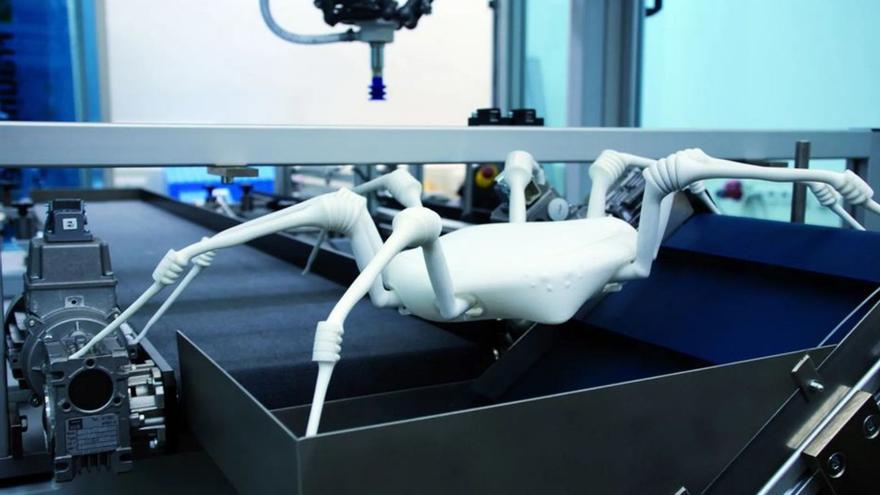Since ancient times, humans have sought inspiration from nature to create tools and solutions that allow them to adapt to their environment. Technology is no exception. In fact, many of the most important advances in technology are thanks to the observation and study of nature.The central idea is that nature has already solved many of the problems we face. Animals, plants and microbes are perfect engineers. After billions of years of research and development, what doesn’t work is now a fossil, and what remains holds the secret to great engineering. Nature has a duty to be an engineer, so by mimicking the effects of biological processes, we can create more efficient and sustainable technological solutions.
There are many examples of this practice, which engineer Otto Smith It is called biomimicry or biomimicry (Greek bios, life and mimesis, imitation) and was pioneered by the famous inventor Leonardo da Vinci. Biomimicry integrates many disciplines, including biology, physics, chemistry, and computer science, and is used to design solutions in a variety of fields, including architecture, engineering, and medicine.
Nature has a duty to be an engineer
Japan’s bullet trains have always been famous for their speed. But until a few years ago They were due to noise. When these Shinkansen trains entered a tunnel, they forced air at such a speed that it created a pressure wave and a booming sound that could be heard 400 meters away, which was especially a problem in residential areas. This technical difficulty was particularly problematic because it was linked to both the geometry of the tunnel and the speed of the train.
The wave pressure was proportional to the cross-section of the train and the ratio of the tunnel, and there was an exponential increase in pressure with each unit increase in speed. To address this, the Technical Development Director Eiji Nakatsu It was inspired by birds, specifically the aerodynamics of the kingfisher, a bird that dives at high speed from one fluid (air) to another (water) 800 times denser with a splash.
He hypothesized that the shape of its beak allowed the bird to cut through the water so cleanly without creating a shock wave upon entering the water that would have frightened its prey and complicated its survival as a species. Nakatsu redesigned the front of the train to reflect the shape of the kingfisher’s beak (shaped like a crushed diamond with curved sides) and was able to significantly reduce train noise in tunnels.
China has launched the world’s fastest train
In addition, he modified pantographs (parts that allow electricity to be supplied to the train) inspired by the shape of owl feathers, which have jagged edges that fragment air and reduce turbulence, and also reduce noise. The train will now run at a speed of 320 kmph and meet the government’s stringent noise standard of 70 dBa.
Another clear example of imitating nature in technology is the development of advanced materials such as spider silk, which is incredibly strong and highly resistant to light and water and fire. Over the years its structure has been studied and artificially reproduced and used as protective equipment, sportswear and construction materials. The Velcro closure mechanism was inspired by the ability of burdock plant burrs to attach to human clothing. Plants use these burrs to attach seed pods to passing animals, dispersing them over wide areas. Velcro replicates this by using a strip of fabric lined with hooks. When pressed together, the hooks are attached to the loops and joined together.
Future products that will change the world
Interest in robotics focuses on the study of animals that are highly skilled at movement and navigation in their environment. Biomimetic engineers study the way these animals move and are inspired by them to create robots that can easily move across different terrains. For example, snake-inspired robots to navigate tight spaces and difficult terrains; Robot “Cockroach” T-RHex, A six-legged robot designed to walk on uneven ground and climb walls; MIT’s robotic cheetah can jump over unexpected obstacles; Or a 3D-printed robotic spider by researchers at the Fraunhofer Institute in Germany equipped with hydraulic bellows that move its legs and allow it to maintain stability while moving on steep and inaccessible surfaces. In robotics, inspired by octopuses and their tentacles, manipulable arms are designed to be rigid or flexible as needed. Flexible movement is accomplished by inflatable boxes, while their stiffness is controlled by a central tube containing particles that accumulate and compress when pressure is applied, creating the desired stiffness in the tent.
Robots to change the world
A whale’s ability to swim and the bumps on its fins have inspired WhalePower to develop jagged edge wind turbines that are up to 20% quieter and more efficient than conventional smooth blades. Shark skin inspired the development of advanced coatings for the hulls of ships, submarines, airplanes, and even human swimsuits. The small pits or teeth on the shark’s skin channel the water and significantly reduce its resistance, allowing its speed in the water to be higher than that of other animals.
Of course, nature, the only entity that continues to innovate after millions of years, can provide us with models for a sustainable and highly productive economy, and chart the path to the necessary ecological restoration of today’s world.

